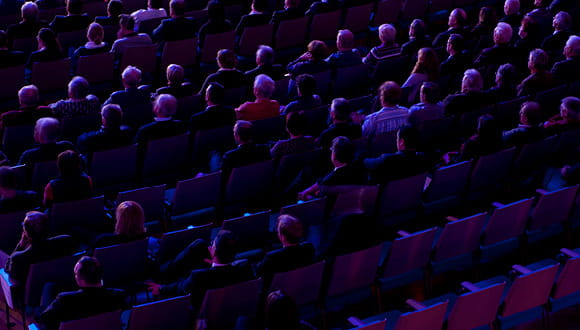Superspreading Events During COVID-19: Inevitable or Avoidable?
Oct. 22, 2020 - Katie McCallumWe've all heard about a few COVID-19 superspreading events by now — where contact tracing shows that all it took was one "patient zero" and one ill-designed gathering to spark a huge cluster of cases.
Superspreading events look like a typical gathering that you wouldn't have thought twice about prior to the pandemic. Prominent examples of these events include a soccer match, choir practice, a religious service, a birthday party, a wedding, nightclubs and, most recently, the White House Rose Garden.
While some of these events occurred before the gravity of this pandemic was fully understood and accepted, all of these events have a few things in common: large numbers of people, indoor spaces and typically no mask-wearing.
But, given how easily this virus generally spreads, are these superspreading events just inevitable byproducts of the COVID-19 pandemic? Or can they actually be prevented?
"It appears that some people infected with COVID-19 are much better at spreading the virus than others, and — given the right (or, as we'll see later, wrong) circumstances — this can lead to the occurrence of superspreading events," says Dr. Wesley Long, director of diagnostic microbiology at Houston Methodist. "We don't know why some people might spread the virus so much more efficiently. We also don't know who these people are or will be. Regardless of these unknowns, what we do know is that superspreading events are largely preventable."
What is superspreading transmission exactly?
Before defining what superspreading is, it helps to understand what superspreading isn't — and it isn't the person-to-a-few-other-people spread we typically think about when considering the general behavior of COVID-19.
Every infectious illness has what's called an r-naught (R0) number, which represents the average contagiousness of the illness. It's the average number of people the virus will be spread to by someone who's ill if proper precautions aren't taken — and COVID-19 has an r-naught of about 2 to 3.
"Given that each infected person can spread the virus to a few other people, it's easy to see how a gathering or event can end in one or two people becoming sick. This number can increase when community spread in an area is significant, simply because the likelihood of more than one attendee being infected becomes higher," says Dr. Long. "While this scenario showcases how easily COVID-19 cases can spread in large gatherings, it's not necessarily a superspreading event."
Superspreading is a phenomenon in which a single person gets more than just two or three other people sick — sometimes many more. Not only does this make relying solely on r-naught to predict and track the spread of COVID-19 somewhat problematic, it adds another layer of complexity to understanding COVID-19.
"The other infectious illnesses we're used to seeing, such as the seasonal flu, tend to spread in a straightforward fashion," says Dr. Long. "But COVID-19 doesn't seem to behave this way, and it's in part because some people are much, much better at spreading the virus than others. These people are able to infect well beyond what's considered the average number of people, and, we cannot predict who they are."
Right now, experts can only speculate as to why some people spread the virus so much better than others. What experts do know, however, is that it only takes the combination of an infected person who is transmitting COVID-19 efficiently attending an unsafe gathering or event to throw r-naught out the window — resulting in way more than two or three other people leaving the event infected.
"By now, most people understand that you can have COVID-19 and not know it, whether that's because your symptoms are mild or just haven't started yet," says Dr. Long. "Now, add onto that the reality that some of those people could also be significantly better at spreading the virus, and they won't know that either. It's why any gathering or event can result in a large batch of cases, even if the virus isn't spreading particularly well in that community or area. All it takes is just one infected person in some cases."
How to prevent a superspreading event
While superspreaders may be the "secret" ingredient to a superspreading event, there are other ingredients — and these aren't secret at all.
"Superspreading relies on more than one person, and it can't happen in isolation. It takes a group of people making a collective decision to not only gather as a large group, but gather in such a way that increases the risk of transmitting the virus," explains Dr. Long.
But, here's the good news: The keys to preventing a superspreading event are the preventive measures we should all already be used to considering, such as:
- Social distancing (which may be farther than you think)
- Wearing a mask, especially when social distancing is challenging
- Avoiding crowds and large gatherings, particularly those held in indoor spaces with poor ventilation
- Washing your hands frequently
- Staying at home if you're sick
"Maybe one of the most important things that superspreading events remind us is how important it is to continue to remain vigilant throughout this entire pandemic — not just when community spread is high in your area," says Dr. Long. "Sometimes, even when you think overall risk is low, all it takes is for one person and a gathering of people being risky with their behaviors to spark a superspreading event."
Concerned you may have COVID-19?
- If you're experiencing COVID-19 symptoms, you can speak to a Virtual Urgent Care provider 24/7. The provider will help you determine if testing is needed and advise you on where you should go.


